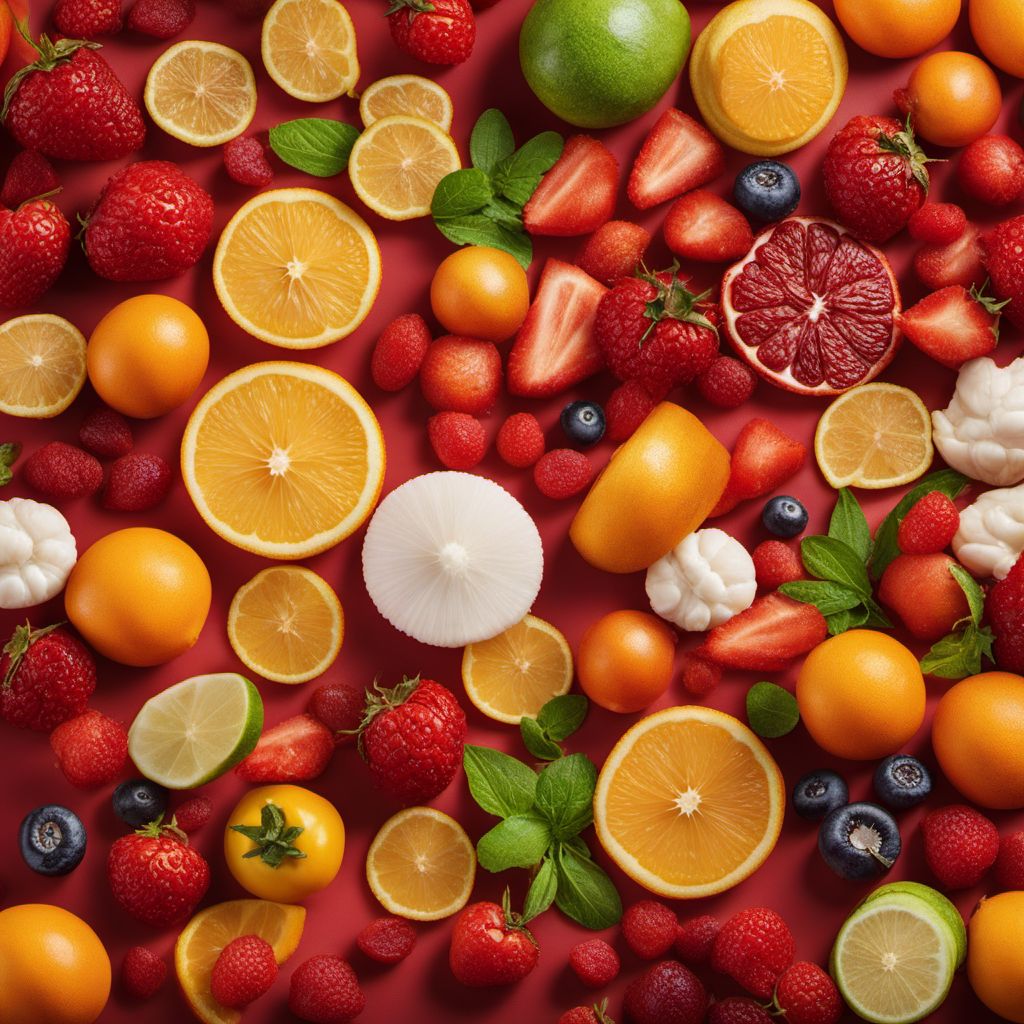
Ingredient
Food colours
The Art of Vibrant Hues
Food colours come in a wide range of vibrant shades, allowing chefs and home cooks to create visually stunning dishes. They are available in liquid, gel, or powder form and can be used to tint various food items, including icing, dough, beverages, and more. Food colours are a versatile tool in the culinary world, enabling endless creative possibilities.
Origins and history
The use of food colours dates back centuries, with ancient civilizations using natural ingredients like saffron, beet juice, and turmeric to add color to their dishes. Over time, the development of synthetic food dyes expanded the range of available colors, providing chefs with a broader palette to work with. Today, food colours are widely used in both professional and home kitchens to enhance the visual appeal of food.
Nutritional information
Food colours are primarily used for their visual impact and do not contribute significant nutritional value to dishes.
Allergens
Food colours may contain allergens such as artificial additives or preservatives, so individuals with specific allergies or sensitivities should carefully read the ingredient labels before consuming food items containing food colours.
How to select
When selecting food colours, opt for reputable brands that use high-quality ingredients and have a good reputation in the culinary industry. Look for products that are labeled as food-grade and approved by regulatory authorities. Additionally, consider the specific application and choose the type of food colour (liquid, gel, or powder) that best suits your needs.
Storage recommendations
To maintain the freshness and quality of food colours, store them in a cool, dry place away from direct sunlight. Ensure that the containers are tightly sealed to prevent moisture or air from affecting the colors. Avoid exposing food colours to extreme temperatures, as this can alter their consistency and potency.
How to produce
Producing food colours at home is a complex process that requires specialized knowledge and equipment. It is recommended to purchase food colours from trusted suppliers or manufacturers who adhere to strict quality standards.
Preparation tips
When using food colours, start with small amounts and gradually add more until the desired shade is achieved. Remember that a little goes a long way, so it's better to add color gradually rather than risk overpowering the dish. For liquid food colours, use a dropper or toothpick for precise measurements. Gel or paste food colours are more concentrated, so adjust the quantity accordingly. When tinting icing or frosting, allow the colors to develop for a few minutes before making any adjustments, as the hues may intensify over time.
Culinary uses
Food colours are widely used in baking and confectionery to create visually appealing treats such as cakes, cookies, candies, and pastries. They are also utilized in the preparation of beverages, including cocktails, mocktails, and smoothies, to add a pop of color. Additionally, food colours are employed in decorative techniques like marbling, ombre effects, and painting on fondant or royal icing.
Availability
Food colours are commonly available in grocery stores, baking supply shops, and online retailers. They can be found in most countries around the world.

